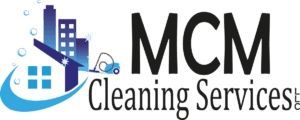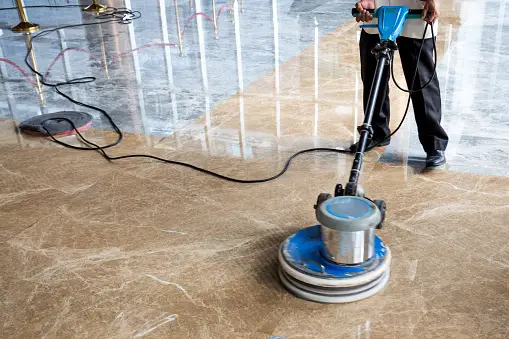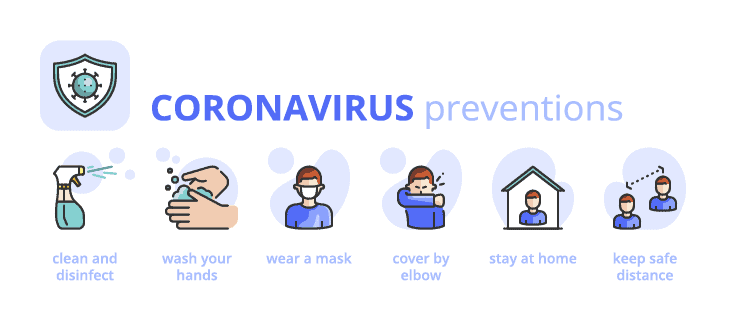
Eco-Friendly Cleaning Practices for Homes and Businesses
Date Posted:
March 7, 2024
Introduction to Eco-Friendly Cleaning
In today’s world, where environmental consciousness is on the rise, eco-friendly cleaning practices have gained significant traction. From homes to businesses, more and more people are opting for cleaning methods that are not only effective but also gentle on the planet. But what exactly does eco-friendly cleaning entail?
What eco-friendly cleaning entails
Eco-friendly cleaning involves the use of products and practices that minimize harm to the environment and human health. This means avoiding harsh chemicals and instead opting for natural, biodegradable alternatives.
Importance of eco-friendly practices
The importance of eco-friendly cleaning cannot be overstated. Not only does it help protect the environment by reducing pollution and waste, but it also contributes to better indoor air quality and overall health.
Benefits of Eco-Friendly Cleaning
The benefits of eco-friendly cleaning extend beyond just environmental concerns. Let’s explore some of the key advantages:
Health benefits
Traditional cleaning products often contain chemicals that can be harmful when inhaled or come into contact with the skin. Eco-friendly alternatives, on the other hand, are safer for both humans and pets, reducing the risk of allergic reactions and respiratory issues.
Environmental benefits
By choosing eco-friendly cleaning products, you’re reducing your carbon footprint and minimizing your impact on the planet. These products are typically made from renewable resources and are biodegradable, meaning they break down naturally without harming the environment.
Economic benefits
While some eco-friendly cleaning products may have a slightly higher upfront cost, they often prove to be more cost-effective in the long run. Additionally, businesses that adopt eco-friendly practices may attract environmentally conscious customers, leading to increased loyalty and revenue.
Common Eco-Friendly Cleaning Products
You don’t have to look far to find eco-friendly cleaning products. Many of them can be found right in your kitchen pantry. Here are some common ones:
- Vinegar: A natural disinfectant and deodorizer.
- Baking soda: Effective for scrubbing and deodorizing.
- Lemon juice: Has antibacterial properties and a fresh scent.
- Essential oils: Add fragrance and have antibacterial properties.
DIY Eco-Friendly Cleaning Recipes
Making your own cleaning products is not only cost-effective but also allows you to control what goes into them. Here are a few simple recipes to try:
All-purpose cleaner
Mix equal parts water and vinegar in a spray bottle. Add a few drops of your favorite essential oil for fragrance.
Window cleaner
Combine water, vinegar, and a small amount of dish soap in a spray bottle. Use newspaper or a microfiber cloth to wipe away streaks.
Dish soap
Mix castile soap with water and a few drops of essential oil for fragrance. Use as you would regular dish soap.
Eco-Friendly Cleaning Tools and Equipment
In addition to using eco-friendly cleaning products, it’s important to consider the tools and equipment you use. Here are some options:
- Microfiber cloths: Trap dust and dirt without the need for chemicals.
- Reusable sponges: Wash and reuse instead of throwing away after a single use.
- Eco-friendly brushes: Made from sustainable materials like bamboo or recycled plastic.
Eco-Friendly Cleaning Practices for Homes
Implementing eco-friendly cleaning practices at home is easier than you might think. Here are some tips for different areas of the house:
Kitchen cleaning tips
- Use vinegar and baking soda to clean countertops and appliances.
- Replace disposable paper towels with reusable cloths.
- Opt for eco-friendly dishwasher detergent and laundry soap.
Bathroom cleaning tips
- Make a paste with baking soda and water to scrub sinks and tubs.
- Use vinegar to remove hard water stains from faucets and showerheads.
- Choose natural toilet bowl cleaners over chemical-based ones.
Living areas cleaning tips
- Dust regularly with a microfiber cloth to reduce allergens.
- Open windows to let in fresh air and improve ventilation.
- Use rugs made from natural materials like cotton or wool.
Eco-Friendly Cleaning Practices for Businesses
Businesses can also benefit from adopting eco-friendly cleaning practices. Whether you own a small office or a large retail store, here are some tips to consider:
Office spaces
- Provide employees with reusable water bottles and mugs to reduce plastic waste.
- Use green cleaning products in common areas and restrooms.
- Encourage employees to power down computers and other electronics when not in use.
Restaurants
- Source locally grown produce and organic ingredients whenever possible.
- Use biodegradable takeout containers and utensils.
- Implement a composting program for food waste.
Retail stores
- Offer customers the option to receive electronic receipts instead of paper ones.
- Use energy-efficient lighting and heating systems to reduce electricity consumption.
- Partner with eco-friendly suppliers and manufacturers.
Challenges and Solutions in Implementing Eco-Friendly Cleaning
While the benefits of eco-friendly cleaning are clear, there are challenges that may arise when trying to implement these practices. Here are some common issues and potential solutions:
Resistance to change
Some employees or customers may be resistant to switching to eco-friendly products. In this case, education and awareness are key. Provide training sessions and informational materials to explain the benefits of eco-friendly cleaning.
Cost concerns
Eco-friendly products may have a higher upfront cost compared to their traditional counterparts. However, businesses can offset these costs by reducing water and energy consumption, as well as by attracting environmentally conscious customers.
Education and awareness
Many people are simply unaware of the impact that traditional cleaning products can have on the environment and human health. By educating employees and customers about the benefits of eco-friendly cleaning, businesses can inspire positive change.
Tips for Transitioning to Eco-Friendly Cleaning
If you’re ready to make the switch to eco-friendly cleaning, here are some tips to help you get started:
- Start small by replacing one or two cleaning products with eco-friendly alternatives.
- Educate yourself and others about the benefits of eco-friendly cleaning.
- Invest in quality products that are certified by reputable organizations like Green Seal or EcoLogo.
Case Studies: Successful Implementation of Eco-Friendly Cleaning
To illustrate the real-world impact of eco-friendly cleaning, let’s take a look at two case studies:
Residential case study
A family decides to switch to eco-friendly cleaning products to reduce their exposure to harmful chemicals. Not only do they notice an improvement in their health, but they also save money in the long run by making their own cleaning solutions.
Commercial case study
A restaurant chain transitions to eco-friendly cleaning practices in all of its locations. By using biodegradable cleaners and implementing a composting program, they not only reduce their environmental impact but also attract new customers who appreciate their commitment to sustainability.
Measuring the Impact of Eco-Friendly Cleaning
It’s important to measure the impact of eco-friendly cleaning to ensure that your efforts are making a difference. Here are some metrics to consider:
- Reduction in waste: Keep track of the amount of packaging and disposable products you use.
- Improvement in air quality: Monitor indoor air quality before and after switching to eco-friendly products.
- Cost savings: Compare your utility bills and cleaning supply costs before and after making the switch.
Future Trends in Eco-Friendly Cleaning
As technology advances and consumer demand for sustainable products grows, we can expect to see some exciting developments in the field of eco-friendly cleaning. Some future trends to watch out for include:
- Technological advancements: Innovations in green cleaning technology, such as water-saving cleaning machines and solar-powered equipment.
- Increased consumer demand: As more people become aware of the importance of eco-friendly cleaning, the demand for green cleaning products and services is likely to continue rising.
Eco-Friendly Cleaning Certification and Standards
To ensure that you’re truly using eco-friendly products, look for certifications and standards from reputable organizations like Green Seal and EcoLogo. These certifications indicate that a product has been rigorously tested and meets strict environmental and health criteria.
Conclusion
In conclusion, eco-friendly cleaning practices offer a multitude of benefits for both homes and businesses. By choosing natural, biodegradable products and implementing sustainable cleaning practices, you can help protect the environment, improve indoor air quality, and save money in the process.
FAQs
What are the top eco-friendly cleaning products?
Some of the top eco-friendly cleaning products include vinegar, baking soda, lemon juice, and essential oils.
How can businesses implement eco-friendly cleaning practices?
Businesses can implement eco-friendly cleaning practices by using green cleaning products, investing in energy-efficient equipment, and educating employees and customers about the benefits of sustainability.
Are homemade cleaning products as effective as commercial ones?
Yes, homemade cleaning products can be just as effective as commercial ones, if not more so. Plus, they’re often more affordable and environmentally friendly.
What are the cost implications of switching to eco-friendly cleaning?
While eco-friendly cleaning products may have a slightly higher upfront cost, they often prove to be more cost-effective in the long run due to reduced water and energy consumption.
How can I find eco-friendly cleaning services in my area?
You can find eco-friendly cleaning services in your area by searching online directories, asking for recommendations from friends and family, or contacting local environmental organizations for referrals.
To get started, request a quote here.







